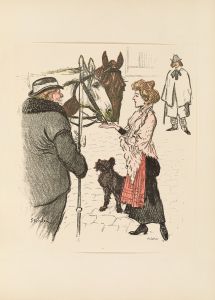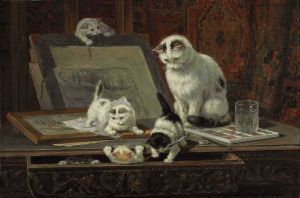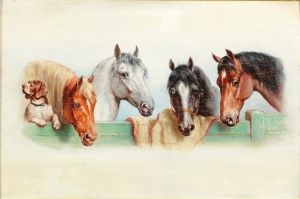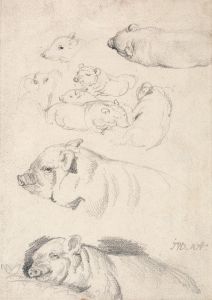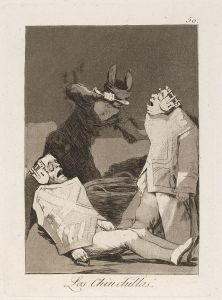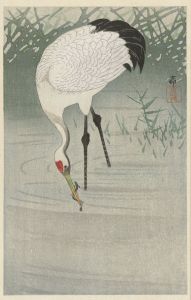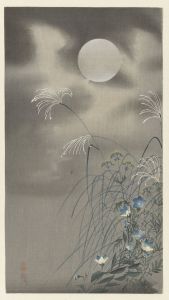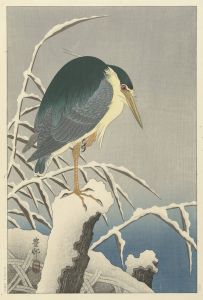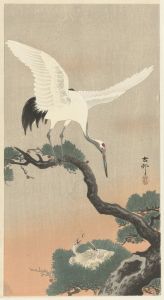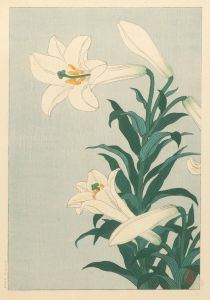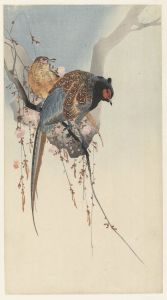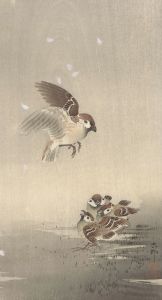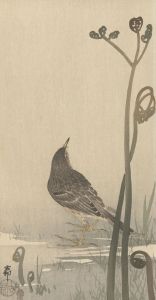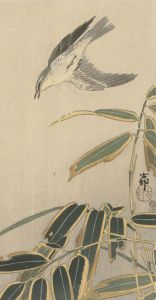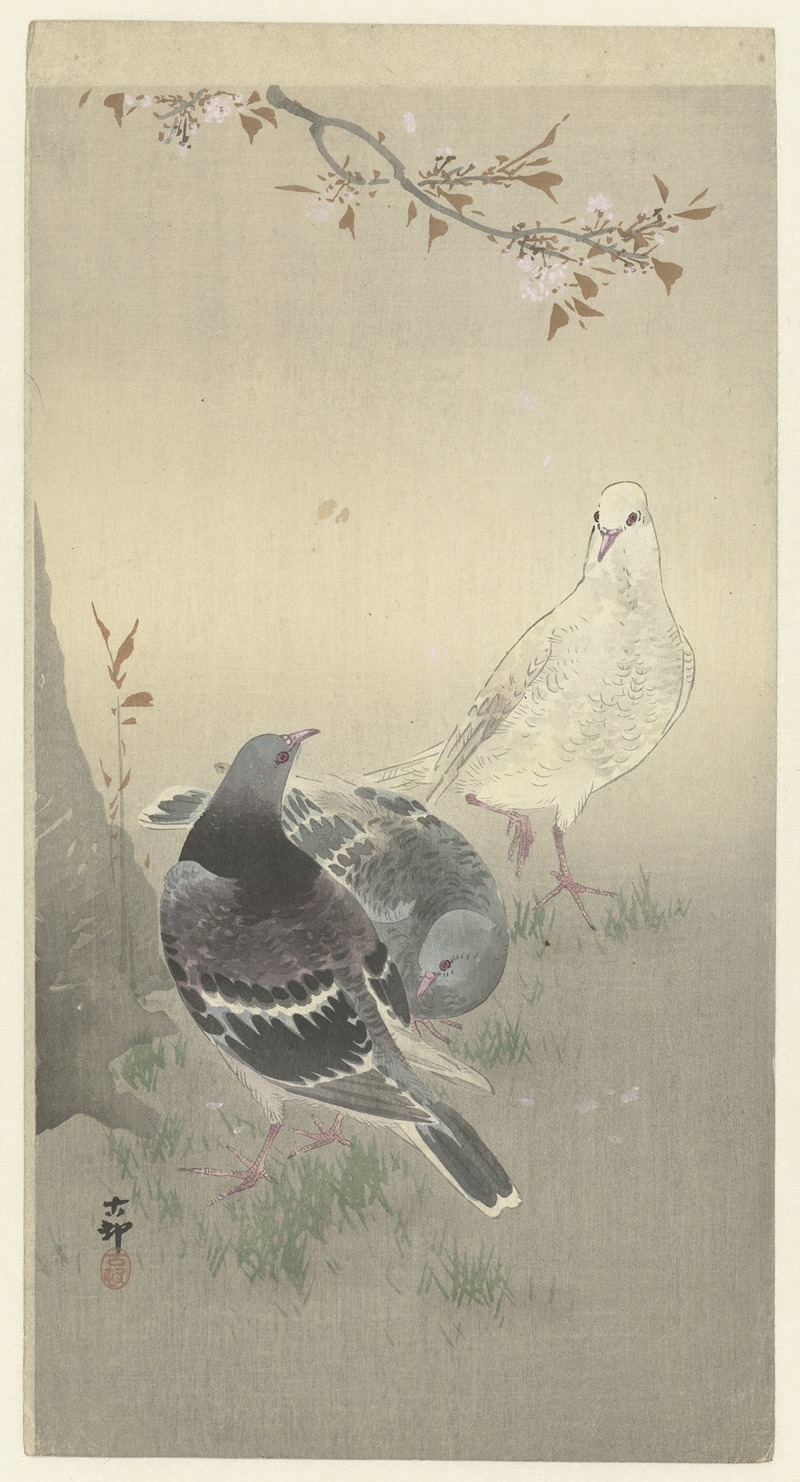
Three tame pigeons
A hand-painted replica of Ohara Koson’s masterpiece Three tame pigeons, meticulously crafted by professional artists to capture the true essence of the original. Each piece is created with museum-quality canvas and rare mineral pigments, carefully painted by experienced artists with delicate brushstrokes and rich, layered colors to perfectly recreate the texture of the original artwork. Unlike machine-printed reproductions, this hand-painted version brings the painting to life, infused with the artist’s emotions and skill in every stroke. Whether for personal collection or home decoration, it instantly elevates the artistic atmosphere of any space.
Ohara Koson (1877–1945) was a Japanese artist known for his work in the genre of kachō-ga, which translates to "bird-and-flower painting." He was part of the shin-hanga (new prints) movement, which sought to revive traditional ukiyo-e art with a modern twist during the early 20th century. Koson's works are celebrated for their delicate beauty, attention to detail, and the ability to capture the essence of the natural world.
"Three Tame Pigeons" is one of Koson's notable works, showcasing his skill in depicting birds with lifelike precision and grace. This piece features three pigeons, rendered with meticulous detail and a keen observation of their behavior and physical characteristics. The composition is balanced and harmonious, typical of Koson's style, which often emphasizes simplicity and elegance.
Koson's use of color in "Three Tame Pigeons" is subtle yet effective. The pigeons are depicted in soft, muted tones that highlight their natural plumage. The background is typically understated, allowing the viewer to focus on the birds themselves. This approach is consistent with the shin-hanga movement's emphasis on creating visually appealing and accessible art that could be appreciated by a broad audience.
The artist's technique involves the use of woodblock printing, a traditional Japanese method that allows for the production of multiple copies of a single image. This technique requires a high level of skill and precision, as each color is applied using a separate block. Koson's mastery of this technique is evident in the fine lines and delicate shading that characterize "Three Tame Pigeons."
Koson's work, including "Three Tame Pigeons," gained popularity both in Japan and internationally. His prints were particularly well-received in the United States and Europe, where they were collected by art enthusiasts and museums. This international acclaim helped to solidify Koson's reputation as one of the leading artists of the shin-hanga movement.
In addition to his technical prowess, Koson's ability to convey the personality and vitality of his subjects sets his work apart. In "Three Tame Pigeons," each bird appears to have its own distinct character, captured in their poses and expressions. This attention to detail and the ability to imbue his subjects with life and individuality are hallmarks of Koson's art.
Overall, "Three Tame Pigeons" exemplifies Ohara Koson's talent for creating beautiful, evocative images of the natural world. His work continues to be admired and studied for its artistic merit and contribution to the shin-hanga movement. Koson's legacy as a master of kachō-ga endures, and his prints remain highly sought after by collectors and art lovers around the world.





